Physical Address
304 North Cardinal St.
Dorchester Center, MA 02124
Physical Address
304 North Cardinal St.
Dorchester Center, MA 02124
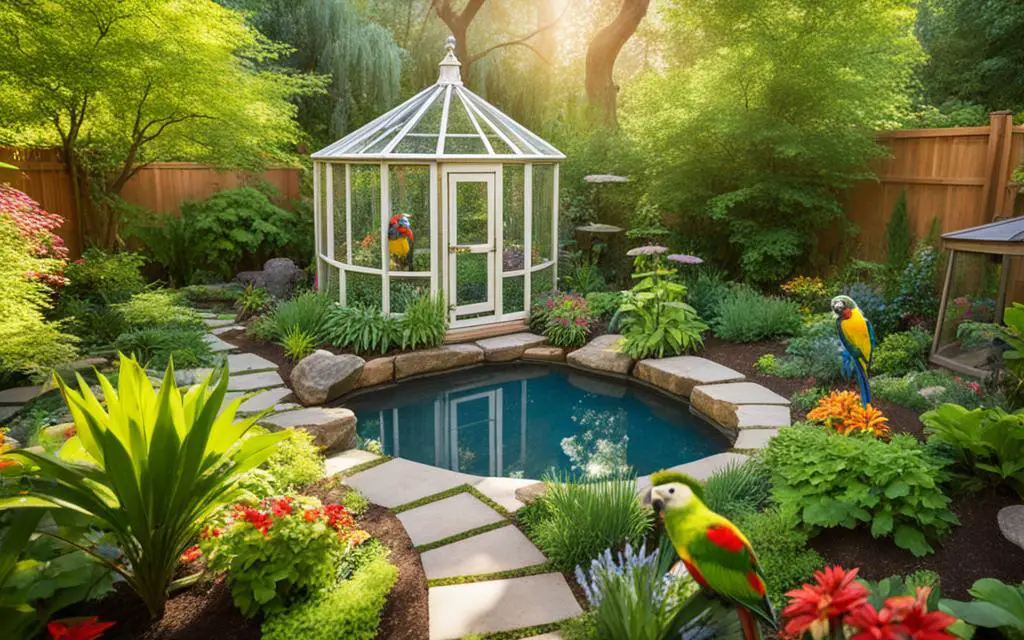
Did you know that sunlight is a key to a longer life for pet birds? For those who love their birds, building a bird aviary can be life-changing. It turns your backyard into a space where your birds can feel free and safe.
Thinking about how to build a bird aviary or upgrading your current one? The secret is in the planning. Choose the right size, location, and design to make your backyard bird aviary perfect. You want a place that is a home for your birds and brings you joy.
To make a perfect home for your birds, think about their needs and safety. Planning carefully is the first step to bird paradise. Love for your birds is the most important tool in this process.
A backyard aviary improves your outdoor look and helps birds a lot. It makes a more natural space for them. This space is great for their health and happiness. Let’s look at the key advantages an aviary brings to your yard.
Backyard aviaries are big enough for birds to act naturally. They can fly, forage, and interact with others. These are things they often can’t do in small cages. This bigger space lets them be themselves, making them healthier and happier.
Birds need fresh air and sunlight to thrive. The sun helps make Vitamin D3, which is key for bird bone health. Sunlight also keeps the aviary cleaner by fighting off germs. This means a better, healthier space for your birds.
An aviary lets birds fly and move a lot, which is great for them. This freedom is essential for their wellbeing. It helps prevent health issues and keeps them happy. A big aviary is like a piece of the wild where they can be their best.
Creating an aviary for birds means thinking about size requirements and the needs of different bird species. Parrots need more room due to their large wings, while finches are happy with less space. The design of the bird aviary should allow for flying and mimic a bird’s natural behavior.
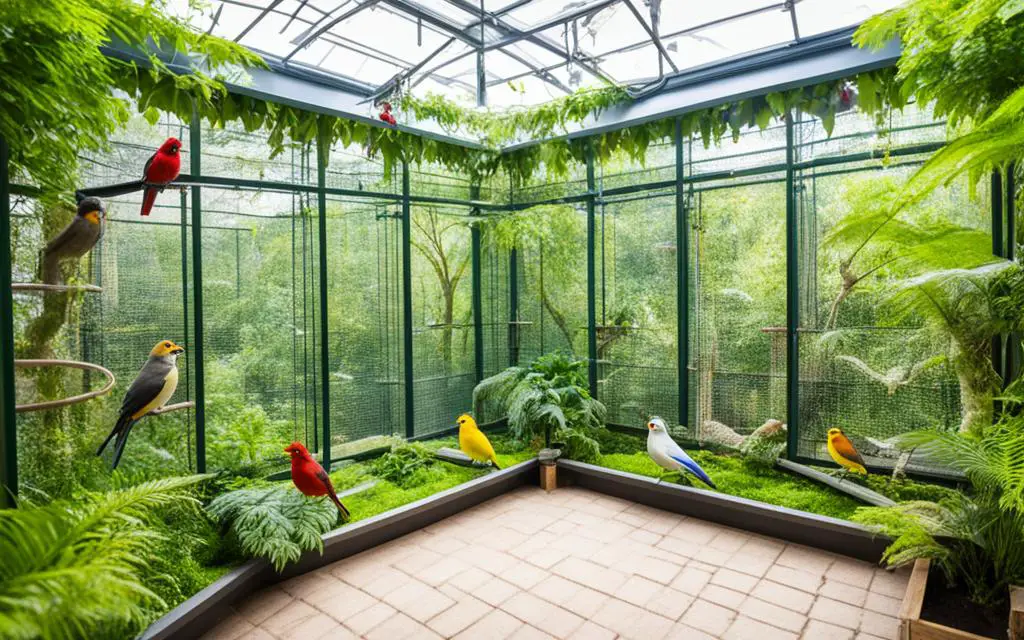
A good aviary uses separate areas or custom designs for each type of bird. It’s all about making sure birds feel at home and are healthy. Let’s compare some space needs for common birds you might find in an aviary.
| Bird Species | Minimum Size Requirements (sq ft per bird) | Typical Activities |
|---|---|---|
| Parrots | 30 | Climbing, Flying |
| Finches | 2 | Flying, Socializing |
| Canaries | 2 | Singing, Flying |
| Eagles | 50 | Soaring, Predatory Simulations |
The table clearly shows the big differences in size requirements for each bird type. Taking this into account from the start leads to a better home for the birds. They can act naturally and stay healthy.
It’s crucial to pick the perfect spot for your aviary. This choice affects your birds’ health and safety. Look for a spot that gets enough sunlight, protects from predators, and shelters your birds from the weather.
Choose a place for your aviary where you can see it well from inside your home. This way, you’ll be able to watch your birds and interact with them safely. It also means quick help during an emergency.
Trees may seem like a good idea for natural shelter. But, they can stop sunlight from reaching your aviary. They also make it easier for predators to approach. It’s better to place your aviary where the sun can reach it in the morning. This keeps your birds healthy and safe from predators.
Think about shade for the hottest times of the day too. This helps place your aviary perfectly.
Keep your aviary away from noisy places to make your birds comfortable. Loud sounds from AC units or workshops can stress them out. A quiet spot will help make your birds happy.
Starting your DIY bird aviary project adds beauty to your backyard. It also becomes a safe haven for birds. The key to building a bird aviary is making it safe and comfy. It should meet the needs of different bird types. You should include perches, feeding stations, water dishes, and nest boxes. These items should be arranged to feel like the birds’ natural home.
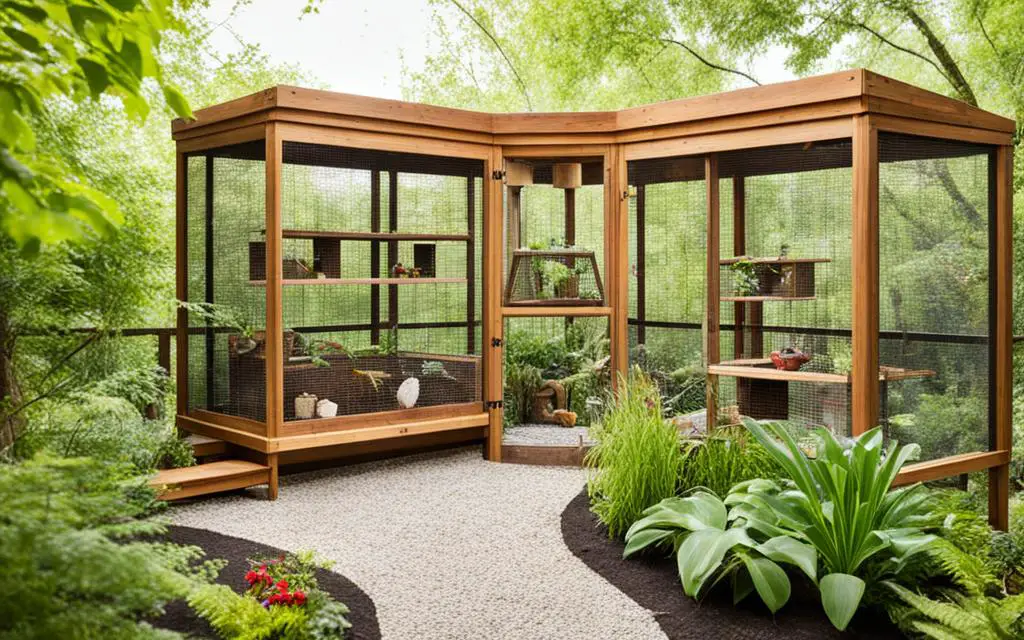
First, plan your aviary design’s main features. Use different sizes of perches to keep birds’ feet and joints healthy. Place the feeding and water areas smartly. This makes sure all birds can eat and drink easily. Nest boxes should be big and in quiet spots. They help birds feel private and safe to breed.
| Feature | Description | Benefit |
|---|---|---|
| Perches | Varying diameters and textures | Supports foot health and mirrors natural habitat |
| Feeding Stations | Easily accessible and separate from water containers | Reduces contamination and promotes hygiene |
| Water Containers | Shallow and protected from droppings | Ensures clean drinking water; mimics dew and puddles |
| Nest Boxes | Spacious, private, positioned in quiet areas | Encourages natural breeding behaviors and safety |
Every part of the aviary helps keep birds stress-free and healthy. By carefully planning these details, you create a great home for birds. Your backyard will buzz with life. It will show off great aviary design. Plus, it will give you plenty of moments to enjoy watching the birds.
Choosing the right materials for your aviary is vital. It keeps your birds safe and makes the structure last longer. A great choice for the frame is a wooden frame. It’s strong and can be customized easily. Combine it with welded wire mesh or galvanized steel for a safe, lasting home for your birds.
Let’s dig into what each material does in aviary building:
| Material | Properties | Uses in Aviary Construction |
|---|---|---|
| Wooden Frame | Durable, natural look, easy to adjust | It holds up the aviary, sets the basic structure |
| Welded Wire Mesh | Tough, good view, bird-friendly | Goes around the wooden frame, keeps the birds safe |
| Galvanized Steel | Fights rust, tougher than regular steel | It’s used for connections and support, makes things more solid |
It’s key to pick materials free from any harm for your birds. Keeping up with maintenance stops weather and predators from harming your aviary. This way, it stays a safe place for your birds.
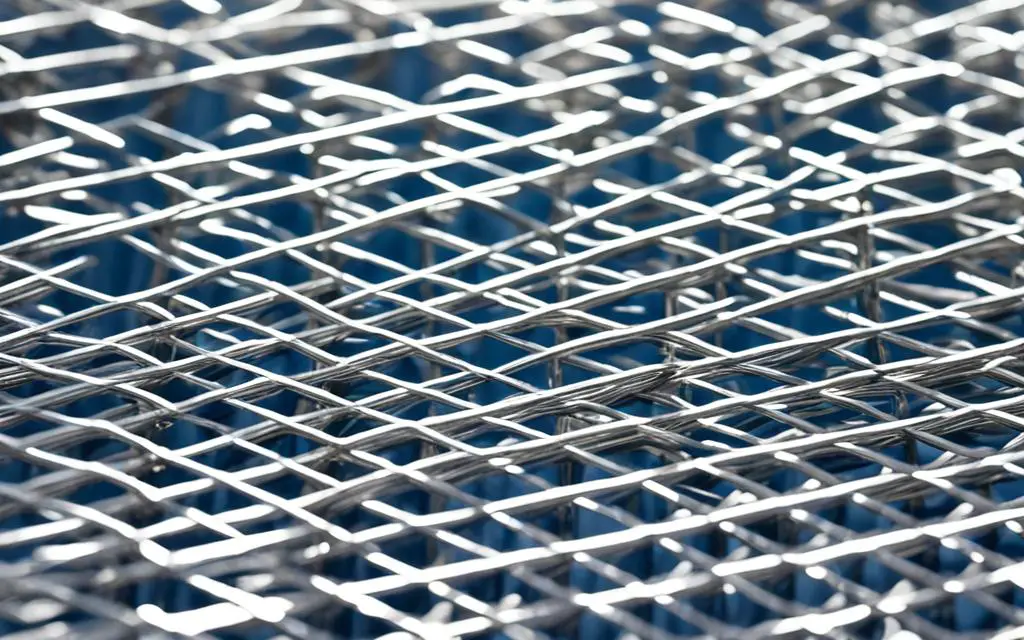
It’s key to pick the right foundation and flooring for a backyard aviary. This choice is vital for both its life and keeping birds safe. It offers a sturdy setting and keeps predators out, making your birds’ home secure.
Aviary foundations mainly fall into soft or hard categories. Soft, using wire mesh floor with gravel, is great for drainage but can move, needing upkeep. A concrete hard foundation is sturdy and deters predators effectively.
Using the right materials under the aviary fights off parasites and stops soil washout. These steps help maintain the aviary’s health and steadiness for the long haul.
| Foundation Type | Benefits | Risks |
|---|---|---|
| Wire Mesh with Gravel | Good drainage, natural feel | Requires occasional maintenance |
| Concrete | Long-lasting, strong predator barrier | Can feel stark, less natural |
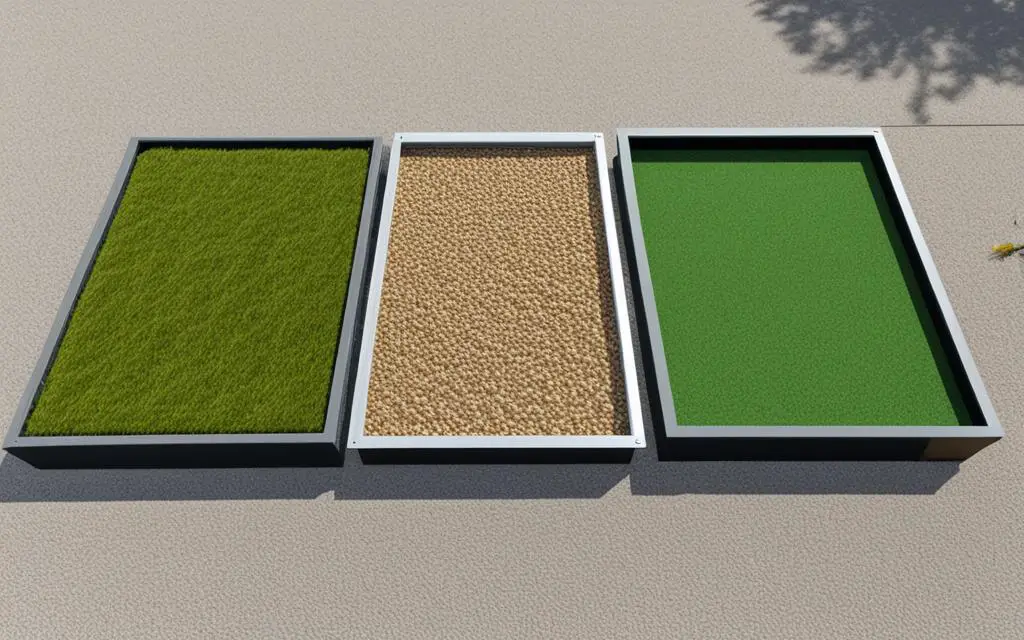
Ensuring your backyard aviary is safe and easy to get into starts with a smart entrance design. It must be simple to get inside yet keep your birds safe. An efficient entryway is key to keeping your birds healthy and stress-free while making it easier to take care of them.
Double door entry systems work best for aviaries. They stop birds from getting out and let people come and go easily. With this setup, one door must be shut before the other opens. So, it makes a safety space that keeps your birds safe from the outside world.
Adding a secure latch and using things like fine wire mesh or clear strings can prevent bird escapes. These choices boost safety and make cleaning and upkeep easier. This way, your aviary can stay a happy place for your birds.
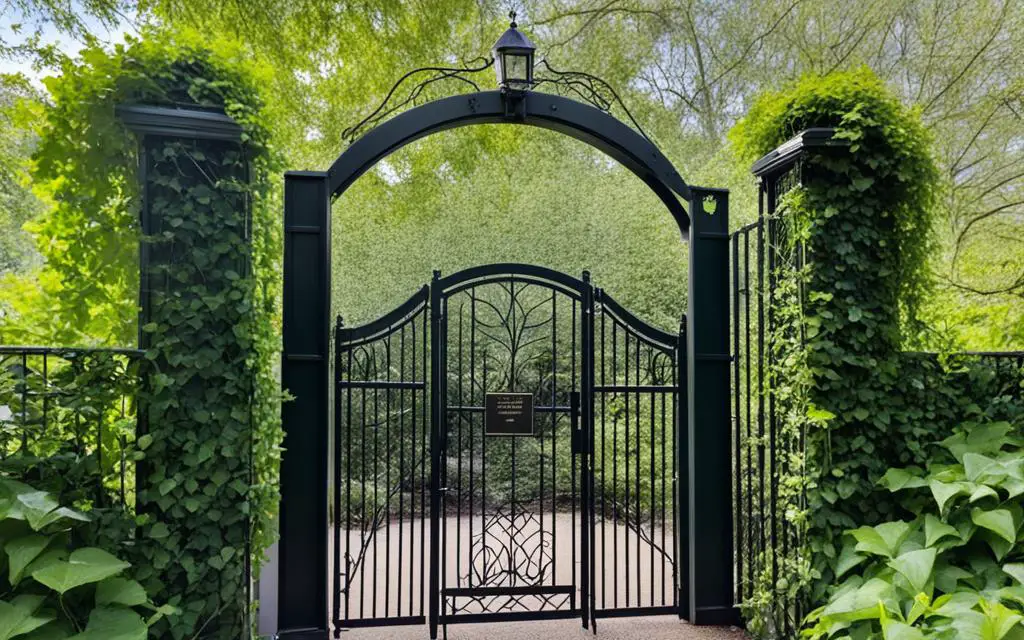
By focusing on these key design features, you make a safe space for your birds. And it also makes taking care of the aviary simpler. This follows the top ways to keep your aviary both safe and easy to manage.
Good roofing is key in aviary design. It gives birds necessary shelter and protection from harsh weather. Picking the right materials and design strategies makes the aviary’s birds safe and comfy. A solid roof offers shade and keeps the air well-circulated.
A steep roof is best. It helps rainwater quickly flow off and stops snow from piling up. This pile-up can hurt the structure. Using waterproof materials and treated woods keeps birds dry and safe. It protects them from weather while looking good and working well.
The aviary’s location should balance sunlight and shelter. It should take in light but still shield against bad weather. This smart position ensures a bird-friendly space all year round.
It’s crucial to keep temperature control and protect your birds from extreme weather. The aviary design should focus on safety and fun for you and your birds. With smart features, you can make sure they get to enjoy their flight space all year round.
Keeping the right conditions in your aviary means using good insulation and ventilation. These help manage the temperature and keep the air fresh. Insulated walls and roofs help in winter, while reflective surfaces keep things cool in summer.
| Feature | Benefits | Recommended for |
|---|---|---|
| Insulated Panels | Keeps the aviary warm in winter and cool in summer | Regions with extreme temperature variations |
| Shade Cloths and Ventilation | Reduces heat stress and allows fresh airflow | Hot climates |
| Sturdy Build Materials | Enhances structural integrity and longevity | Areas prone to harsh weather, e.g., high winds or heavy snow |
Picking the right aviary materials and design cuts down on maintenance costs. It ensures your birds and you keep enjoying, no matter the weather. This makes your investment pay off in enjoyment and use.
Starting the journey to build a bird aviary promises a lovely space for birds. It takes time and work, but the outcome is rewarding. A backyard aviary filled with singing birds reflects the love and care of its owner.
By following good bird aviary plans, owners ensure their birds’ well-being. It becomes a symbol of the care an aviculturist has. The effort and affection put into a diy bird aviary are clear to see.
Key points in this guide include using safe materials and creating a good climate. But the best part is watching birds enjoy their natural environment. A well-made aviary allows birds to live naturally, enhancing their lives.
Seeing birds settle in and enjoy their new home is a special feeling. For bird lovers, a backyard aviary is not just for the birds, it’s also a peaceful spot for them. Such a project creates lasting enjoyment for you and your birds.
This type of project is a work of passion. When you get it right, it brings you closer to your avian friends. Indeed, it is a chance for bird enthusiasts to strengthen their bond with their feathered friends.

My name is Shane Warren, the author behind Your Bird Buddy – your ultimate guide to the wonderful world of birds! Unleash your inner avian explorer as we delve into a vibrant library of knowledge dedicated to all things feathered. From learning about diverse bird species from across the globe to understanding their captivating habitats and behaviors, I’m here to fuel your passion for these magnificent creatures. Not only that, but I also provide valuable insights on being a responsible and informed pet bird owner. Join our vibrant community and let’s celebrate the feathered wonders of the world together – one chirp at a time. And be sure to join our Your Bird Buddy Community over on Facebook!